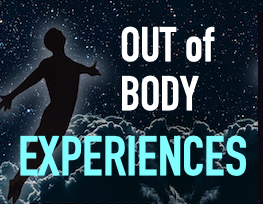 Out-of-Body Experiences:
Out-of-Body Experiences:
A Window Beyond the Self
by Paul Robear
Consciousness is usually something we think of as internal—something happening in here, inside the boundaries of our mind and body. But out-of-body experiences (OBEs) challenge that view in profound and sometimes dramatic ways.
During our media career with our nationally syndicated radio program (The Laura Lee Show, Conversations for Exploration), Laura and I interviewed many authors and experiencers on this very topic. Their stories have stayed with me: floating above the body, looking down from the ceiling, traveling through a tunnel of light, or entering entirely different realms of being. These aren’t just ideas, they’re deeply felt events that often change how people see themselves and the world.
And they invite a deeper question: Is consciousness truly limited to the body or can it transcend it?
In OBEs, individuals often report observing their surroundings with vivid clarity and in some cases, witnessing events later verified by others. While skeptics may dismiss these accounts as hallucinations or neurochemical misfires, many researchers, philosophers, and experiencers are intrigued by the consistency and transformative quality of these reports.
Of course, this isn’t a new debate. For millennia, mystics, theologians, philosophers, and healers have pondered the origin and reach of consciousness. Despite modern neuroscience’s detailed maps of the brain, the essential mystery remains: Where does consciousness come from?
The real challenge OBEs pose is to the materialist view that the brain is the sole generator of consciousness. I suggest they may be glimpses into a larger field of awareness, what some call non-local consciousness. If that’s the case, it opens up profound questions about the nature of perception, identity, and even life after death.
Personally, I’ve found that the more we explore these mysteries, the more humble we become. The phenomenon of OBEs, whether spontaneous, near-death-related, or accessed through altered states, has been reported across cultures and across time. Are they dreams? Illusions? Or are they insights into something very real? These moments make me wonder: What is the true home of consciousness?
For me, I’ve come to embrace them as real and I see them as invitations. They offer a chance to explore consciousness not just as brain activity, but as something far more mysterious and more expansive.
These moments invite the question: What is the true home of consciousness?
I’ve found my own access to these expanded states during deep meditation, or in the trance experiences we engage in through our work with Ritual Postures. In those moments, everything feels exquisitely connected and somehow more real than ordinary life.
Dr. Felicitas Goodman, the founder of the Cuyamungue Institute, used to say that these states allow us to “touch the eternal.” That deeply resonates. Whether or not we leave our bodies in a literal sense, these experiences help us see ourselves differently, not as isolated individuals, but as participants in a greater field of awareness.
Her legacy reminds us that the sacred isn’t far away, it’s close, alive in our bodies, and waiting to be reawakened. With presence and practice, we can step into the unknown, not to escape life, but to understand it more deeply.
And maybe what we call an “out-of-body” experience is really a return—a remembering of our original nature. We are consciousness in communion. We are travelers. And maybe… we were born to explore.

 Out-of-Body Experiences:
Out-of-Body Experiences: